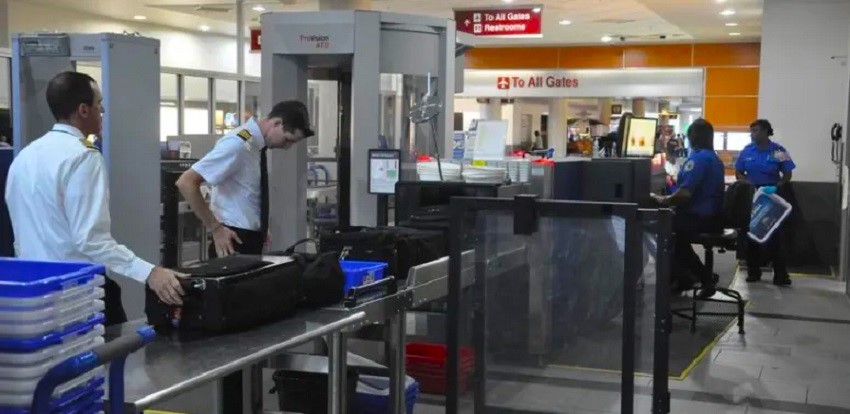Air travel has evolved tremendously over the past few decades. What was once a luxury experience reserved for the wealthy is now an affordable and convenient way for people from all walks of life to get from point A to point B. However, with this increase in accessibility and usage comes heightened risk, requiring airports to prioritize security. This has led to the rise of airport consulting services that specialize in implementing effective security measures to ensure the safety of travelers. This is where technology comes in. Modern advancements in security systems and processes are crucial for detecting threats and maintaining the safety of travelers.
Why Airport Security Matters
Airports are complex environments that see thousands of passengers pass through every day. They are prime targets for those looking to cause harm through acts of terrorism or other crimes. Even small security breaches can lead to disastrous consequences in the air and on the ground. Technology helps create layers of protection that work together to identify and mitigate various potential dangers.
Screening Systems
One of the most vital uses of technology is in passenger and baggage screening. Metal detectors, x-ray machines, body scanners, and chemical detectors allow security personnel to look for prohibited items and suspicious materials. Advanced imaging technology can detect non-metallic threats like liquid explosives and plastic weapons that basic metal detectors would miss. These systems automate much of the scanning process, although human inspection is still required.
Biometrics and Identification
Fingerprint, facial recognition, iris scanning, and other biometric technologies ensure accurate identification of airline passengers. This helps detect potential terrorists or criminals attempting to travel under false identities. Matching biometric data against watch lists also aids in apprehending known threats. In addition, features like digital passport readers and real-time database checks help verify travelers’ identities.
Video Surveillance and Analytics
Thousands of CCTV cameras monitor activity throughout airport terminals. Sophisticated video analytics use algorithms to analyze camera footage and automatically detect anomalies that may indicate a security risk. These include abandoned baggage, breaches in restricted areas, aggressive behavior, and more. Security personnel can then quickly respond to these threats.
Baggage Tracking
Radiofrequency identification (RFID) tags allow each checked bag to be electronically tracked from check-in to claim. This provides real-time monitoring of baggage location, ensuring no bags are lost or routed improperly. The system detects suspicious routing changes that could indicate a planted bomb.
Restricted Area Access
Multi-layered access controls like identification badges, biometric readers and movement sensors protect restricted areas like tarmacs, control towers, and baggage handling. These electronic measures prevent unauthorized access and reduce the need for manned security checkpoints in sensitive zones.
Data Sharing & Analysis
Advanced data aggregation from various airport systems enables proactive threat detection. Shared data facilitates identifying high-risk passengers based on a comprehensive analysis of identities, behaviors, flight histories, and other variables. Behind the scenes, complex risk assessment algorithms help rank risks and determine appropriate responses.
Adaptability & Integration
Airport security systems must adapt to evolving threats and regulations. New technologies like artificial intelligence and 3D scanners continuously enhance threat detection capabilities. Similarly, existing systems must seamlessly integrate to facilitate data sharing and unified situational awareness. Flexible, scalable platforms allow airports to implement and update security solutions rapidly.
While no technology offers perfect safety, modern innovations significantly bolster an airport’s ability to thwart attacks, bombs, hijackings, and other crimes. With greater security comes greater assurance for the traveling public. However, technology only works alongside the expertise of seasoned security professionals. Ultimately, leveraging both human judgment and technological advancement is key to maximizing protection in the air and on the ground.
FAQs
Q: What are some common biometric technologies used in airports?
A: Fingerprint identification, facial recognition, iris/retina scans, and hand geometry recognition are among the most prevalent biometric technologies at airports.
Q: How does CT scanning improve airport security over traditional x-ray systems?
A: CT scanners provide detailed 3D imagery that enables better visualization of contents and densities within bags. This allows security officers to identify explosives and other threats more accurately.
Q: How can data analytics help assess passenger risk?
A: Advanced data systems can aggregate various data points like travel history, behaviors, affiliations, and identities to assign risk scores to passengers. This allows focusing screening efforts on high-risk travelers.
Q: What benefits does RFID tracking provide for airport baggage systems?
A: RFID tags on bags allow real-time location tracking throughout the airport. This improves monitoring, and routing efficiency and ensures no bags are lost or routed improperly.
Q: How does AI enhance video surveillance at airports?
A: AI systems can automatically analyze camera footage to detect abnormal behaviors and events. This enables a faster security response to threats like unattended bags, perimeter breaches, or aggressive actions.
In Conclusion
Rapidly evolving security technologies provide critical layers of protection for the millions of travelers who pass through airports every day. Advanced screening, identification, surveillance, access control, and data analysis systems enable early detection and swift response to myriad threats. While technology has its limits, modern innovations remain essential components in keeping airports secure amidst an unpredictable world. Nevertheless, human oversight and discretion are still required to connect the dots and make context-based decisions. Ultimately, pairing human expertise with technological advancement offers the most promising path forward for airport security.
Tags: airport security check, clear airport security



Leave a Reply